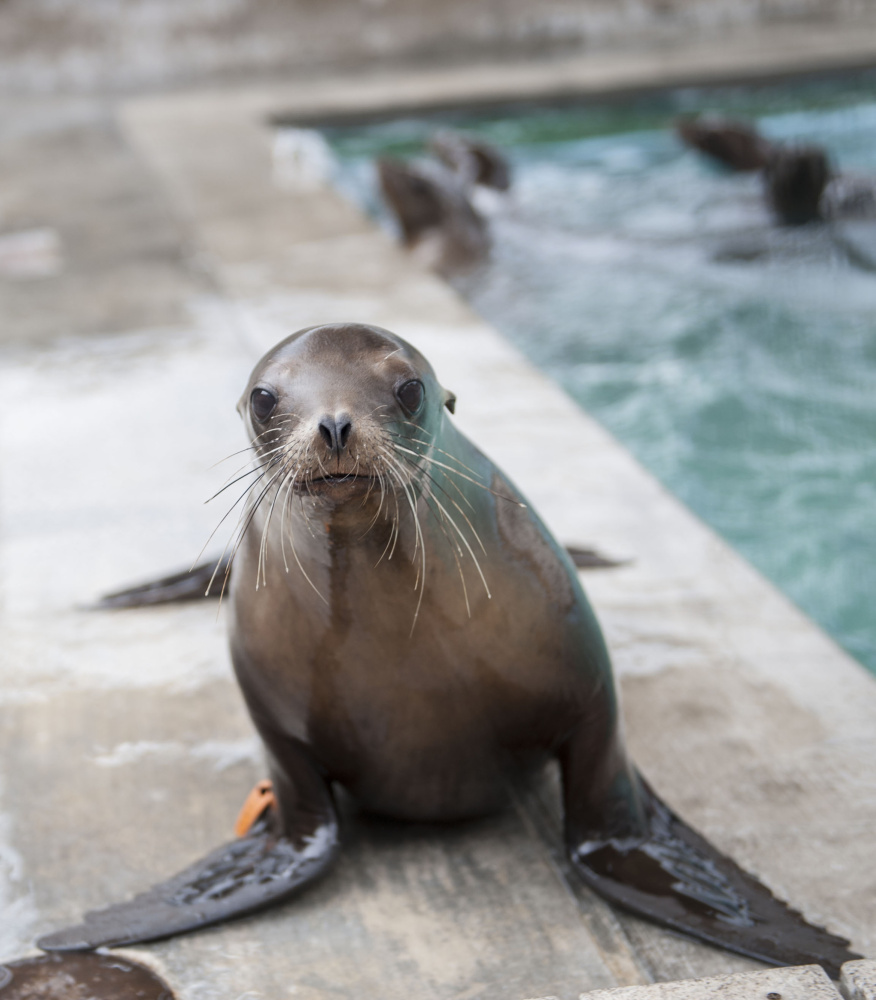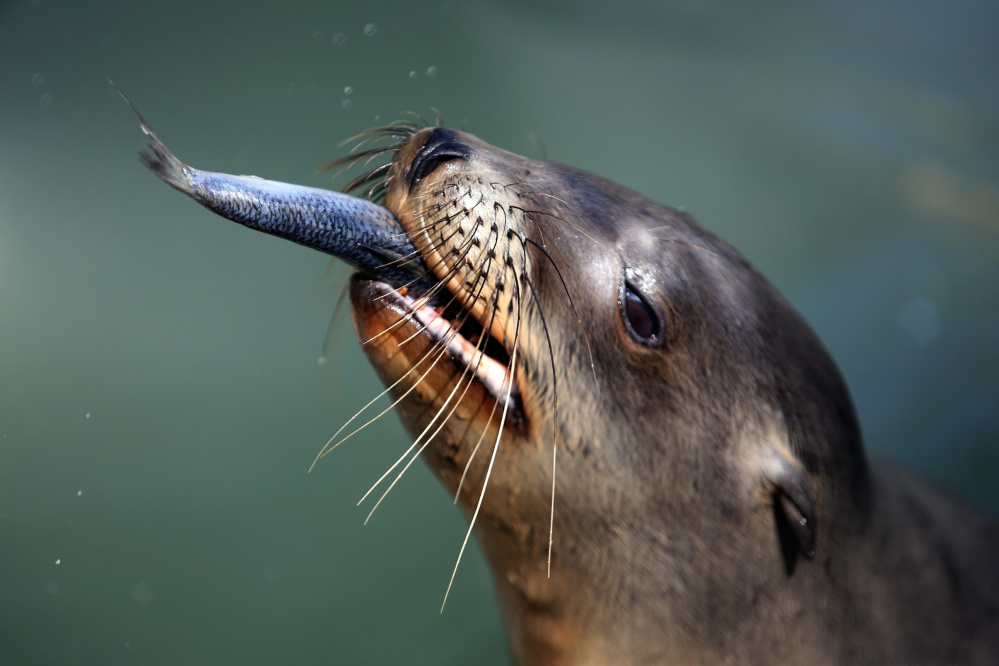LOS ANGELES — Government scientists say there’s a simple explanation for the surge in starving sea lion pups along the Southern California coast: Their mothers can’t find enough nutritious food.
The high-fat, high-calorie fish species that female sea lions prefer to eat have been harder to come by in their usual hunting waters around the Channel Islands breeding colonies, according to researchers from the National Oceanic and Atmospheric Administration. As their preferred sardines and anchovies became less plentiful, they’ve had to settle for rockfish and market squid instead.
The decline in sardines and anchovies and corresponding increase in less nourishing fish explains 81 percent of the change in sea lion pup weights between 2004 and 2015, the NOAA scientists reported Tuesday in the journal Royal Society Open Science.
California sea lions have had a precarious existence since the late 1800s, when humans began hunting them for their fur, meat and oil. By the 1970s, the number of sea lions had dwindled to around 50,000, experts estimate.
The animals’ fortunes began to change in 1972, when President Richard Nixon signed the Marine Mammal Protection Act.
That progress hasn’t always been steady. In El Nino years, anchovies and sardines became scarce and sea lions switched to rockfish, squid and hake. Previous studies have found that when sea lion mothers eat more rockfish and squid (as determined by analyzing their scat), the pups they nurse have lower body weights.
For more than 30 years, researchers from NOAA’s Southwest Fisheries Science Center have been taking a census of young rockfish and other fish species in Central California. The pattern they found was clear: When sardines and anchovies were abundant and rockfish and squid were scarce, sea lion pups weighed more. Conversely, when rockfish and squid were plentiful and sardines and anchovies were not, sea lion pups weighed less.
The NOAA scientists weren’t able to study the “composition or quantity” of milk produced by sea lion mothers, so they couldn’t make a direct link between the types of fish in the sea and the nutritional value of their milk. Still, the results amount to “compelling evidence” that the pups are starving because their moms can’t produce enough milk for them, the scientists wrote.
Send questions/comments to the editors.




Success. Please wait for the page to reload. If the page does not reload within 5 seconds, please refresh the page.
Enter your email and password to access comments.
Hi, to comment on stories you must . This profile is in addition to your subscription and website login.
Already have a commenting profile? .
Invalid username/password.
Please check your email to confirm and complete your registration.
Only subscribers are eligible to post comments. Please subscribe or login first for digital access. Here’s why.
Use the form below to reset your password. When you've submitted your account email, we will send an email with a reset code.